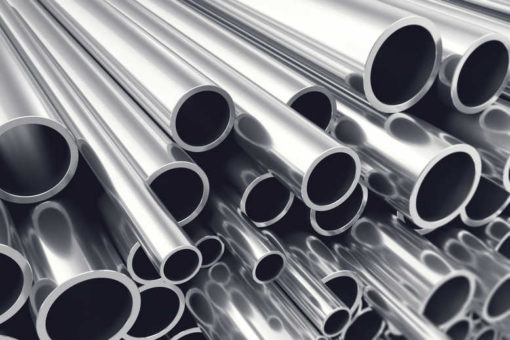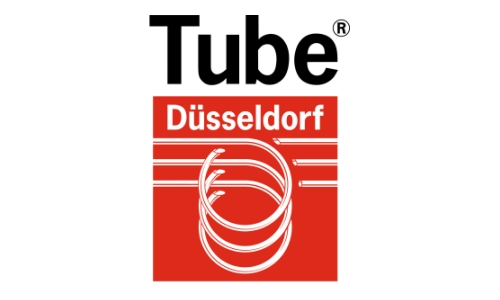 Tubes and pipes are some of the most versatile products and design elements in general.
Tubes and pipes are some of the most versatile products and design elements in general.
Whether in the energy sector, mechanical, power or automotive engineering, in the chemical or petrochemical industry, in construction or in one of the many other areas, tubes and tube designs in different shapes, sizes and weights can be found everywhere.
Steel tubes and pipes cover a particularly broad spectrum, as these products are conquering new applications, partly due to the innovative strength of manufacturers.
However, thanks to new and further developments, they are also maintaining a good position in traditional applications.
In the energy sector pipes have become indispensable for the transportation of oil and gas, while also playing a major role as design elements. In fact, most structural foundations of offshore wind turbines consist of pipe elements. Pipes also fulfil important functions in the offshore production of oil and gas.
Special pipes for deep sea use
This application is one of the focal areas of Salzgitter Mannesmann Forschung GmbH (SZMF), the company that handles research and development for the Mannesmann Division at Salzgitter AG. According to this company, there is a demand not only for products but increasingly also for full-scale technical solutions.
In tubes and pipes, for instance, their super duplex pipes have now been optimised for deep sea applications, so that a reliable media supply can also be ensured in deep water.
Such deep sea supply pipes (so-called umbilicals) are used on offshore platforms for the transportation of control signals, energy and chemicals from the surface of the water to the seabed.
Special locations at great water depths down to 2,500 metres pose major demands on the rigidity, fatigue resistance and corrosion resistance of pipes. This is why trial procedures have been developed that make it possible to qualify super duplex pipes for deep sea applications.
According to the company, close collaboration with initial customers has enabled them to identify the required pipe properties quickly and efficiently and to qualify their pipes accordingly.
Other growth areas that will be supported by research and development projects over the next few years will focus on the customised optimisation of pipe and tube properties. Take, for example, new developments for automotive engineering.
Although the combustion engine has been written off by many, automotive manufacturers are not alone in believing that it will remain an important form of propulsion for many years to come.
However, this makes it necessary to achieve further reductions in consumption and in harmful emissions – an area where precision tubes can help to achieve higher injection pressures that will warrant a more eco-friendly combustion process.
In non-motor applications tubes with variable wall thicknesses can be used to support load-optimised lightweight construction.
Innovations for automotive tube solutions
Lightweight automotive construction is also at the focus of research and development at Benteler AG. Last year, for example, the company held its first Steel/Tube Lightweight Construction Convention in Bad Driburg.
The latest innovations in automotive tube solutions included the prototype of a front axle carrier for electric vehicles. Thanks to a new innovative steel design, the weight has apparently been reduced by 35 per cent.
Another innovation with lightweight potential that may be of interest to automotive manufacturers is the use of welded tubes made from a new steel with superior strength yet also above-average formability.
The company says it has already created the first prototypes for some customers and is now awaiting validation.
Furthermore, the automotive industry should soon benefit from ultra high-strength tubes which can apparently be used as innovative automotive suspension systems. Compared with today’s series production, such chassis solutions should save up to 30 per cent in weight. The first systems, says Benteler, were already being manufactured and validated on customers’ premises in late 2016.
The first successes have also been reported in the segment of hot-rolled axle tubes. Having received initial bookings from customers, serial deliveries are now running well.
Moreover, Benteler has successfully provided customers with a range of innovative steel and tube solutions as well as prototypes for axles, track rods and axle guides for utility vehicles.
New solutions for industry and energy
But Benteler also offers innovative products outside the automotive sector. In industrial applications of seamless precision tubes this includes pre-tubes for the production of injection anchors (ground engineering).
In a large-scale industrial project for tunnelling under a motorway in the Netherlands the company has successfully developed and implemented a modified steel product with, according to Benteler, offer an “excellent combination of strength and robustness” as well as special rolling and heat treatment technology.
Other recent Benteler products include welded and seamless ducts based on special surface technology (Zista Steel) that is intended to provide “excellent corrosion protection in combination with outstanding processing qualities”.
Lightweight tube design for electric vehicle chassis
Although the combustion engine has by no means had its day in vehicle construction, it can be assumed that electromobility will increase and gain in importance.
Tube component manufacturers will need to bear this in mind. After all, a purely electric vehicle no longer has any need for a complex exhaust system, just to mention one example of a tube component.
Another area – lightweight construction – should also become increasingly important with the spreading of battery-driven electric vehicles.
Rechargeable battery packs with a conventional reach of 300 to 500 km (180 to 300 km) still weigh many hundreds of kilograms, which is unlikely to change much – at least in the near future.
Unless it becomes possible to do largely without batteries – fuel cells might be the answer – then it will be important to save weight in other areas.
This will make it vital to reduce the weight of vehicle parts and thus to increase overall efficiency and save resources.
Modern “exotic” materials, such as carbon, still have their limits in mass production, due to technical constraints in manufacturing and also economic limits, even though progress in the industrial processing of such materials is clearly in evidence.
Here, the obvious alternative is lightweight construction based on steel as a proven material.
This is the purpose for which Thyssenkrupp Precision Steel in Hohenlimburg presented a new component for the chassis of electric vehicles some time ago. Specialising in medium-wide strips within the group, the company acted as a cooperation partner in developing a super-light tube made from high-strength steel (HBS 800).
As less material is required, the optimised chassis component apparently allows the manufacturer to save over 34 per cent in weight. Being one third lighter, the component is also said to have benefits such as shorter production times and far less wastage.
For series manufacturers it should be important that they can continue to use their conventional manufacturing processes for the production of this innovative steel design.
Another element in the new vehicle concept is tube stabilisers made from manganese-boron steel. This innovative solution is said to save 45 per cent in weight. Moreover, its homogeneous structure and extremely tight thickness tolerances allow high-frequency welding.
And the concept also permits variable wall thicknesses and thus a further reduction in weight. These new lightweight steel construction solutions are made by a processing firm for the automotive industry.
According to Thyssenkrupp Steel Europe AG, the ideas developed by the cooperation partners are to be used in a project for the Asian market where they will help to create a particularly long-life electric vehicle.
Internal high-pressure forming of hybrid aluminium/steel tubes
Aluminium is one of the most widely used materials in automotive engineering, alongside steel and various plastics. Bonding steel and aluminium components, however, can be a problem.
A solution has now been found by the Institut für Integrierte Produktion Hannover (IPH) gGmbH together with Laser Zentrum Hannover (LZH). The result is a tailored hybrid tube, made from aluminium and steel, which can even be given the relevant shape in an internal high-pressure forming process. First, steel and tube elements are soldered together in a laser process.
This makes it possible to apply internal high-pressure forming without breaking the bond. The developers are convinced that their technology will allow the production of particularly light components for vehicle bodies.
Internal high-pressure forming of hybrid tubes combines two lightweight approaches: Firstly, it saves weight through the geometry of the components, as tubes are generally suited for lightweight construction because of their excellent stiffness and robustness in relation to their weight.
Secondly, the combination of steel and aluminium permits further savings in weight. Being both heavy and rigid, steel is only used for parts that will be exposed to high stress. Segments with less exposure to stress, on the other hand, can be made from aluminium.
The company mentions especially light body parts such as connection points to the B-pillar where steel is used for critical areas that may need to be highly impact-resistant, e.g. in an accident.
The challenge in making such hybrid components is that steel is far more resistant to forming than aluminium. Also, tube sections must be combined in a way that avoids cracks in the joining area while forming is in progress.
As welding leads to a brittle, non-formable seam, the steel and aluminium tubes are bonded together in a laser soldering process. The aluminium silicon batch is locally heated and melted, using a laser beam.
The very low heat input prevents any brittleness in the components that might diminish the mechanical properties of the seam during the forming process.
According to the developers, the soldered joining area can withstand pressures up to 900 bars. In interior high-pressure forming such pressures are more than adequate for the forming of both aluminium and steel.
To achieve maximum homogeneity in the forming process and to obtain the best possible results, the experts recommend combining steel (E235+C) and a higher-strength aluminium alloy (EN AW-6082).
 Between now and the next issue of Tube 2018, the leading International Pipe & Tube Fair, researchers and developers in Germany and elsewhere will undoubtedly come up with further interesting innovations in tubes and pipes.
Between now and the next issue of Tube 2018, the leading International Pipe & Tube Fair, researchers and developers in Germany and elsewhere will undoubtedly come up with further interesting innovations in tubes and pipes.
As always, the leading trade fair will also include new developments in plants and machinery for the manufacturing and processing of pipes and tubes.
As before, Tube 2018 will be held at the Düsseldorf Exhibition Centre, together with wire, the world’s biggest wire and cable trade fair, from 16 to 20 April 2018



